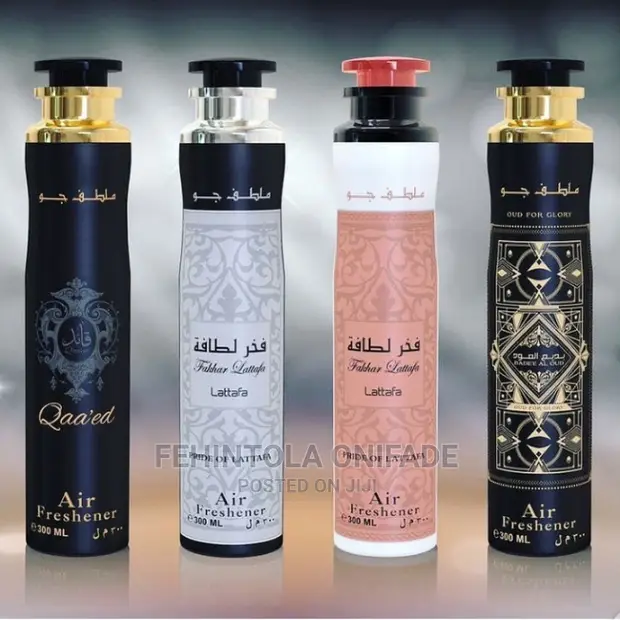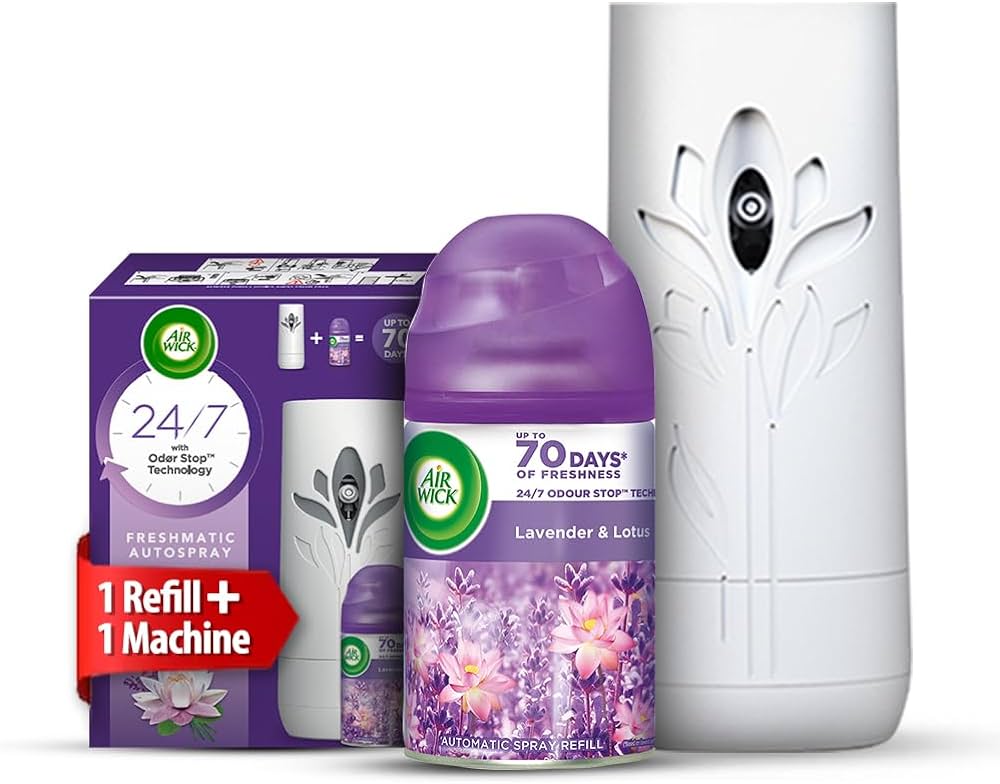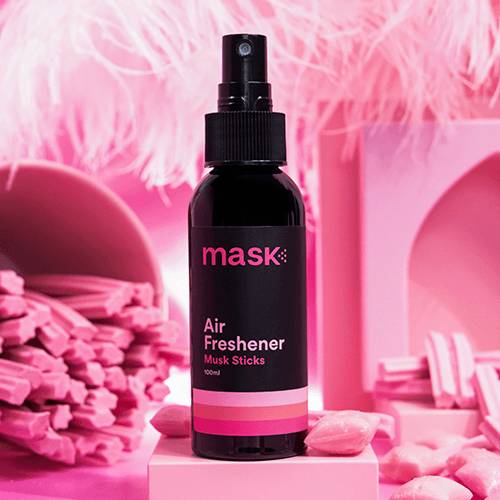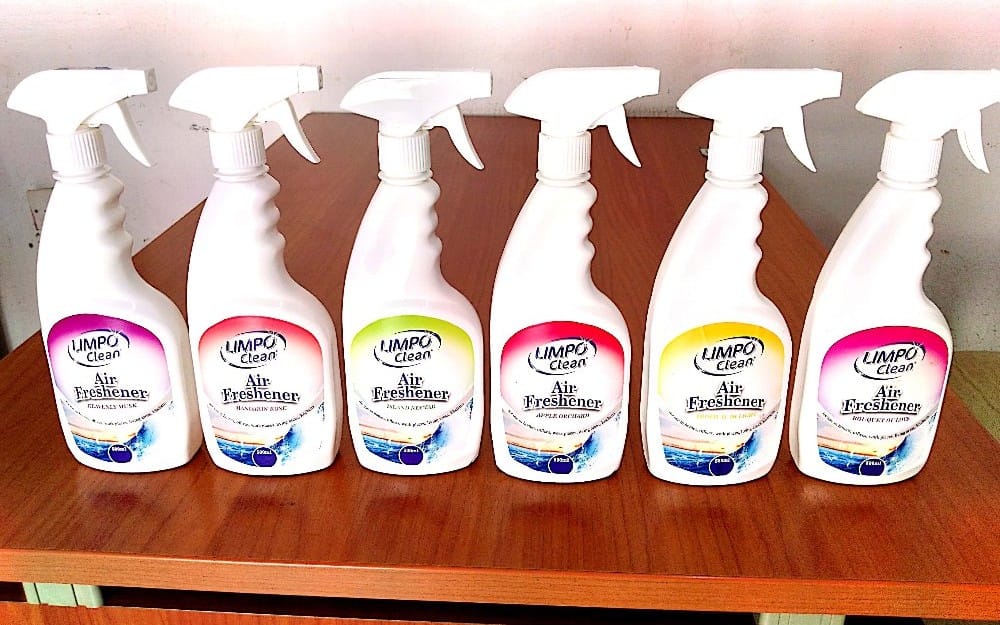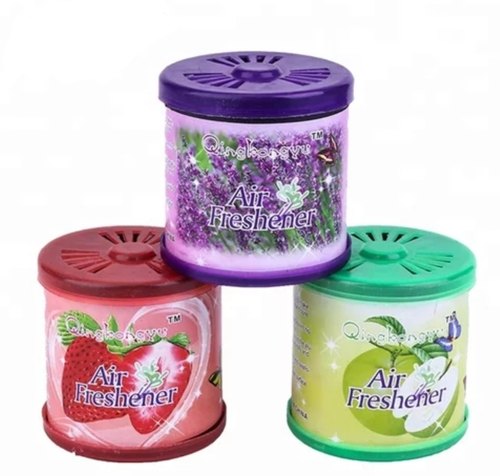Unveiling the Essence: A Comprehensive Guide to Air Fresheners
Embark on a scented journey as we delve into the captivating world of air fresheners. From their aromatic origins to innovative technologies, discover how these little wonders transform spaces, evoke emotions, and elevate the sensory experience of any environment.
The Science and Artistry of Air Fresheners: Elevating Your Senses

In the realm of ambiance and sensory delight, air fresheners stand as small yet mighty champions. These seemingly humble devices have the power to transform a space, infusing it with captivating fragrances that can evoke memories, enhance moods, and create a more pleasant environment. Advancements in technology have revolutionized the world of air fresheners. No longer confined to simple sprays, modern devices utilize various innovative methods to disperse fragrance. Electric diffusers, gel beads, and smart home systems allow for controlled and customizable scent experiences. Some even incorporate essential oils, catering to those seeking natural and therapeutic aromas.
Types of Air Fresheners: A Bouquet of Options
- Spray Fresheners:
- Instantly refreshes the air with a burst of fragrance.
- Ideal for quick enhancements in bathrooms, kitchens, and bedrooms.
- Available in a wide array of scents, from floral to fruity.
- Plug-In Diffusers:
- Utilizes electric technology to disperse continuous fragrance.
- Offers adjustable intensity settings for a personalized experience.
- Compatible with various refillable fragrance oils.
- Gel-Based Air Fresheners:
- Provides a consistent, slow release of fragrance.
- Suitable for small spaces like closets, cars, or drawers.
- Often comes in decorative and customizable designs.
- Reed Diffusers:
- Uses natural reeds to wick and disperse fragrance.
- Offers a constant, subtle scent without electricity.
- Perfect for enhancing the ambiance in living rooms and offices.
- Vent Clips for Cars:
- Clips onto car vents for on-the-go freshness.
- Specially designed for automotive spaces.
- Provides a pleasant driving experience with various scents.
Maintenance Tips: Nurturing the Fragrant Experience
- Regularly Clean Diffuser Components:
- For electric diffusers, clean the reservoir and internal parts regularly.
- Prevents the buildup of residue and ensures optimal performance.
- Rotate and Flip Reeds:
- In reed diffusers, rotating and flipping reeds enhances fragrance diffusion.
- Should be done every few weeks to maintain a consistent scent.
- Adjust Intensity Settings:
- For adjustable air fresheners, tweak intensity settings based on preference.
- Allows for a tailored experience and prolongs the life of the product.
- Monitor Gel Fresheners:
- Check gel-based fresheners for consistency.
- Replace when the gel becomes dry to ensure continued effectiveness.
- Replace Vent Clips:
- Vent clips in cars should be replaced as recommended.
- Ensures a consistent and enjoyable fragrance during drives.
Additional Insights
- Natural and Essential Oil Options:
- Explore air fresheners with natural and essential oil ingredients.
- Ideal for those seeking organic and therapeutic aromas.
- Smart Air Fresheners:
- Embrace the convenience of smart air fresheners.
- Programmable and controllable through mobile apps for a customized experience.
- Consideration for Sensitivities:
- Opt for hypoallergenic and fragrance-free options for individuals with sensitivities.
- Ensures inclusivity and avoids potential allergic reactions.
FAQ
What is air freshener used for?
Air fresheners are used to improve the odor and overall atmosphere of indoor spaces by introducing pleasant and often fragrant scents. The primary purposes and uses of air fresheners include:
- Eliminating Unpleasant Odors:
- Air fresheners are commonly used to neutralize or mask unpleasant odors caused by cooking, pets, smoke, or other sources. They work by releasing pleasant fragrances that help override or eliminate unwanted smells.
- Enhancing Indoor Atmosphere:
- Air fresheners contribute to creating a more pleasant and inviting indoor environment. The introduction of appealing scents can positively impact mood, comfort, and the overall sensory experience in a space.
- Creating a Welcoming Ambiance:
- In homes, offices, and commercial spaces, air fresheners are employed to create a welcoming and inviting ambiance. This is particularly relevant in areas where people gather or interact, fostering a more pleasant and enjoyable atmosphere.
- Improving Indoor Air Quality:
- Some air fresheners come with features that aim to improve indoor air quality. Certain models incorporate air purifying elements or essential oils that not only add fragrance but also contribute to a healthier breathing environment.
- Personalizing Spaces:
- Air fresheners offer individuals the ability to personalize their living or working spaces with scents that reflect their preferences. This personalization can enhance the overall comfort and satisfaction of the occupants.
- Reducing Stress and Promoting Relaxation:
- Aromatherapy air fresheners, often infused with essential oils, are used to promote relaxation, reduce stress, and create a calming environment. Scents like lavender, chamomile, and eucalyptus are popular choices for their therapeutic properties.
- Masking Odors in Specific Areas:
- Air fresheners are strategically placed in specific areas, such as bathrooms, closets, or cars, to mask and control odors associated with those spaces. Vent clip air fresheners, for example, are commonly used in vehicles to maintain a pleasant driving experience.
- Enhancing Sensory Experiences:
- In retail environments, hotels, and other businesses, air fresheners are used to enhance the overall sensory experience. Specific scents may be chosen to complement the brand image or create a distinctive atmosphere for customers.
What makes air freshener last longer?
To extend the longevity of an air freshener and ensure a sustained, pleasant fragrance, consider the following tips:
- Choose Quality Products:
- Invest in high-quality air fresheners. Quality products often contain longer-lasting fragrance formulations and may offer features like controlled release mechanisms.
- Opt for Concentrated Formulas:
- Choose air fresheners with concentrated formulas. Concentrated fragrances tend to be more potent, requiring less product to achieve the desired scent intensity and lasting longer.
- Position Strategically:
- Place air fresheners in strategic locations to optimize their effectiveness. Consider factors like room size, airflow, and the source of odors when deciding on placement.
- Adjust Intensity Settings:
- If your air freshener has adjustable intensity settings, find the right balance for your preferences. Lower intensity settings can prolong the life of the product by releasing fragrance more gradually.
- Use in Moderation:
- Avoid overusing air fresheners. Using too much product can lead to olfactory fatigue, where individuals become less sensitive to the scent over time. Start with a minimal amount and increase as needed.
- Proper Ventilation:
- Ensure adequate ventilation in the space where the air freshener is used. Good airflow can help distribute the fragrance more evenly and prevent the scent from becoming overpowering in specific areas.
- Regularly Clean and Maintain:
- Keep the area around the air freshener clean. Dust and debris can accumulate and interfere with the dispersal of the fragrance. Regularly clean the product itself as per the manufacturer's instructions.
- Rotate and Flip Reeds:
- If you use reed diffusers, rotating and flipping the reeds can help refresh and prolong the scent. This should be done periodically to ensure a consistent fragrance release.
- Consider Natural Alternatives:
- Explore natural alternatives such as essential oil diffusers or potpourri. Natural fragrances may last longer and have additional health benefits.
- Store Properly:
- Store extra air fresheners in a cool, dry place away from direct sunlight. Exposure to heat and sunlight can degrade the fragrance over time.
- Choose Time-Released or Smart Options:
- Some air fresheners come with time-released or smart technology, allowing for more controlled and gradual fragrance release. These options can help the product last longer.
- Combine with Other Odor Control Methods:
- Address the source of unpleasant odors rather than relying solely on air fresheners. Combining good hygiene practices and proper waste management can help maintain a fresh environment.
Can you use air freshener as perfume?
While air fresheners and perfumes share the common purpose of providing pleasant scents, it's important to note that they are designed for different applications, and using air freshener as perfume is not recommended. Here are several reasons why:
- Ingredients:
- Air fresheners are formulated with ingredients that are suitable for dispersing fragrance into the air, but they may not be intended for direct contact with the skin. Perfumes, on the other hand, are specifically crafted with skin-safe ingredients to provide a pleasant scent when applied to the body.
- Skin Sensitivity:
- Air fresheners may contain chemicals and substances that can cause skin irritation or allergic reactions when applied directly to the skin. Perfumes undergo extensive testing to ensure they are safe for skin contact.
- Alcohol Content:
- Many air fresheners contain a higher percentage of alcohol, which helps disperse the fragrance into the air. Applying high-alcohol content products directly to the skin can be drying and irritating.
- Longevity and Complexity:
- Perfumes are formulated with a focus on skin longevity and the gradual release of fragrance notes. Air fresheners are designed for quick dispersion into the air and may not offer the same complexity or longevity when applied to the skin.
- Appearance and Packaging:
- Air fresheners are typically packaged in bottles or containers that are not designed for precise application on the skin. Perfumes often come in bottles with spray or dab-on applicators for controlled and targeted use.
- Regulatory Compliance:
- Perfumes are subject to strict regulations and guidelines regarding the use of ingredients, labeling, and safety for human skin contact. Air fresheners are not held to the same standards for skin application.
What are the disadvantages of air fresheners?
While air fresheners serve the purpose of masking or eliminating unpleasant odors and enhancing indoor ambiance, they also come with potential disadvantages. It's essential to be aware of these drawbacks, especially for individuals with sensitivities or those seeking to minimize environmental impact. Here are some disadvantages of air fresheners:
- Chemical Sensitivities:
- Many air fresheners contain synthetic chemicals, such as phthalates, formaldehyde, and volatile organic compounds (VOCs). Individuals with chemical sensitivities or respiratory conditions may experience adverse reactions, including headaches, dizziness, or respiratory irritation.
- Allergic Reactions:
- Fragrances and additives in air fresheners can trigger allergic reactions in some individuals. Skin irritation, sneezing, watery eyes, and other allergy symptoms may occur, especially for those sensitive to specific ingredients.
- Respiratory Issues:
- The release of airborne particles and chemicals from air fresheners can contribute to respiratory problems, especially in individuals with asthma or other respiratory conditions. Some chemicals may irritate the airways and exacerbate breathing difficulties.
- Masking Odors vs. Addressing the Source:
- Air fresheners merely mask or temporarily cover up odors rather than addressing the root cause. In some cases, this may lead to the accumulation of unpleasant smells, as the source of the odor is not addressed.
- Environmental Impact:
- Some air fresheners, particularly aerosol sprays, may contribute to environmental pollution. The release of propellants and VOCs into the air can have negative effects on indoor air quality and may contribute to outdoor air pollution.
- Overpowering Scents:
- Overuse of air fresheners or the use of highly potent fragrances can result in overpowering scents that may be unpleasant to some individuals. This can lead to discomfort and may exacerbate symptoms in those with sensitivities.
- Olfactory Fatigue:
- Continuous exposure to the same scent may lead to olfactory fatigue, where individuals become desensitized to the fragrance. This can diminish the effectiveness of the air freshener over time.
- Not Addressing Source of Odor:
- While air fresheners can temporarily improve the smell of a space, they do not eliminate the source of the odor. Proper cleaning, ventilation, and addressing the cause of unpleasant smells are more effective in the long term.
- Long-Term Health Concerns:
- Prolonged exposure to certain chemicals found in air fresheners may be associated with long-term health concerns. Research is ongoing, and some studies suggest a potential link between regular use of air fresheners and adverse health effects.
- Product Contamination:
- Air fresheners may contribute to product contamination when used in food preparation areas. The release of particles into the air can settle on surfaces, including kitchen utensils and food.
How does fragrance affect human health?
Fragrances can have both positive and negative effects on human health, and the impact may vary depending on individual sensitivities, the type of fragrance, and the concentration used. Here are some ways in which fragrances can affect human health:
Positive Effects:
- Mood Enhancement:
- Pleasant fragrances, especially those derived from natural sources, can positively affect mood and emotions. Certain scents, such as lavender or citrus, are associated with relaxation and stress reduction.
- Stress Reduction:
- Aromatherapy, which involves the use of fragrances for therapeutic purposes, is believed to reduce stress and promote relaxation. Essential oils and natural fragrances are commonly used in aromatherapy practices.
- Improved Sleep Quality:
- Certain fragrances, such as lavender, chamomile, or vanilla, are believed to have calming properties that may contribute to improved sleep quality. These scents are often used in products designed to promote relaxation before bedtime.
- Aesthetic Enjoyment:
- Fragrances can enhance the overall aesthetic enjoyment of spaces, contributing to a pleasant and inviting atmosphere. This can positively impact mental well-being and comfort.
Negative Effects:
- Allergic Reactions:
- Some individuals may be allergic or sensitive to certain fragrance ingredients, leading to skin irritation, redness, itching, or respiratory symptoms such as sneezing and congestion.
- Respiratory Irritation:
- Synthetic fragrances and certain volatile organic compounds (VOCs) found in fragranced products may irritate the respiratory system. This can be particularly problematic for individuals with asthma or other respiratory conditions.
- Headaches and Dizziness:
- Strong or overpowering scents can trigger headaches and dizziness in sensitive individuals. This is often associated with exposure to high concentrations of synthetic fragrances.
- Chemical Sensitivities:
- Fragranced products may contain synthetic chemicals, such as phthalates, which have been linked to chemical sensitivities. Individuals with multiple chemical sensitivities may experience adverse reactions to these substances.
- Hormonal Disruption:
- Some fragrance ingredients, particularly certain synthetic compounds, may have endocrine-disrupting properties. Prolonged exposure to these substances may potentially interfere with hormonal balance.
- Aggravation of Existing Health Conditions:
- Fragrances can exacerbate symptoms in individuals with existing health conditions, such as allergies, asthma, or migraines. Those with fragrance sensitivities may experience worsened symptoms in the presence of strong scents.
- Environmental Impact:
- Certain fragrance ingredients, when released into the environment, can contribute to indoor air pollution. This may have broader health implications for individuals exposed to these pollutants over extended periods.
What is the difference between room freshener and air freshener?
The terms "room freshener" and "air freshener" are often used interchangeably, but there can be subtle differences in their meanings depending on context and regional preferences. In general, both are products designed to improve the odor and overall ambiance of indoor spaces, but their usage and application may vary. Here are some distinctions between the two:
- Scope of Application:
- Room Freshener: This term is often used to refer to products specifically designed for freshening the air in a particular room or area. It may include various products such as sprays, plug-ins, or reed diffusers.
- Air Freshener: This term has a broader scope and can encompass products designed to freshen the air in various indoor environments, including homes, offices, cars, and other enclosed spaces.
- Product Types:
- Room Freshener: It is a generic term that can refer to a variety of products designed to freshen the air in a room. This may include sprays, candles, diffusers, or any other product with the primary purpose of improving the room's fragrance.
- Air Freshener: This term is also broad and can include any product or method used to freshen the air in different settings. It may include room fresheners, car fresheners, bathroom fresheners, and more.
- Application Methods:
- Room Freshener: The term may be associated with a specific method of application, such as spraying a fine mist, using reed diffusers, or employing electric plug-ins to release fragrance.
- Air Freshener: This term is more encompassing and may refer to various application methods, including aerosol sprays, gels, oils, plug-ins, and other devices designed to release pleasant scents into the air.
- Perceived Purpose:
- Room Freshener: The emphasis may be on freshening a specific room or area, suggesting a more localized approach.
- Air Freshener: The term suggests a broader application, addressing the overall air quality and fragrance in different indoor spaces.
- Consumer Perception:
- Room Freshener: Some consumers may associate this term with products that are specifically marketed for use in homes or specific rooms.
- Air Freshener: This term may be perceived as a more general or universal term for products that freshen the air in various settings.
What is the difference between air freshener and perfume?
Air fresheners and perfumes serve distinct purposes and are formulated for different applications. Here are the key differences between air fresheners and perfumes:
1. Purpose and Application:
- Air Freshener: Designed to improve the odor and overall ambiance of indoor spaces. Air fresheners are typically used to eliminate or mask unwanted odors in homes, offices, cars, and other enclosed areas. They come in various forms, including sprays, plug-ins, gels, and diffusers.
- Perfume: Formulated for personal use as a fragrance applied to the body. Perfumes are created to provide a pleasant scent for individuals, and they are typically applied to the skin, often on pulse points such as the wrists and neck.
2. Composition:
- Air Freshener: Contains a combination of chemicals, natural extracts, and/or synthetic fragrances designed to disperse into the air and neutralize or mask odors. The formulation is optimized for room-filling scents and longevity.
- Perfume: Formulated with a mix of fragrance oils, alcohol, and water. Perfumes are crafted with a focus on skin compatibility, ensuring that they are safe for direct contact with the skin.
3. Concentration of Fragrance:
- Air Freshener: Typically has a lower concentration of fragrance compared to perfumes. The goal is to provide a subtle and consistent background scent without overwhelming the space.
- Perfume: Available in different concentrations, with higher concentrations (e.g., perfume or parfum) having a more intense and longer-lasting fragrance on the skin.
4. Application Method:
- Air Freshener: Applied to the air or surfaces in a room. Common application methods include spraying, plugging in, or using diffusers.
- Perfume: Applied directly to the skin. Most commonly available in spray or dab-on formats for precise and controlled application.
5. Target Use:
- Air Freshener: Targets the improvement of the overall air quality and ambiance in enclosed spaces.
- Perfume: Personal fragrance designed to complement an individual's style and enhance their personal scent.
6. Packaging:
- Air Freshener: Typically packaged in containers designed for easy dispersion into the air, such as spray bottles, plug-in devices, or decorative diffusers.
- Perfume: Packaged in aesthetically pleasing bottles, often with spray or dab-on applicators, emphasizing the personal and intimate nature of the product.
Air fresheners play a vital role in creating pleasant indoor environments by eliminating or masking undesirable odors. Available in various forms, including sprays, gels, and diffusers, these products disperse carefully crafted fragrances into the air. While their primary function is to improve the overall ambiance of homes, offices, and vehicles, air fresheners offer versatility in application methods and scents. However, users should be mindful of potential disadvantages, such as chemical sensitivities and environmental impact. Striking a balance between effective odor control and responsible usage ensures that air fresheners contribute positively to the sensory experience of indoor spaces.

